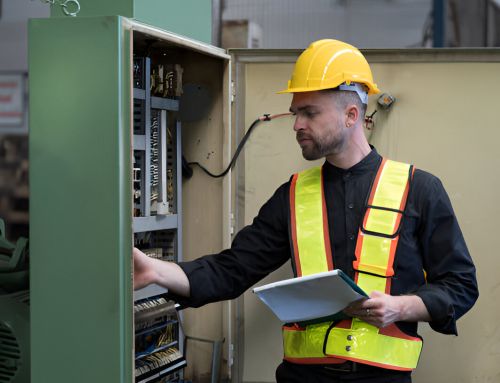
Understanding EICR Certificates is crucial for ensuring the safety and compliance of electrical installations in residential, commercial, and industrial properties. An Electrical Installation Condition Report (EICR) is a formal document produced by qualified electricians following a thorough assessment of the electrical systems within a property. Its primary purpose is to confirm that these systems are in satisfactory condition and meet current safety standards.
The significance of EICR certificates extends beyond mere regulatory compliance. For landlords, it is a legal requirement to produce a satisfactory EICR before initiating new tenancies, as mandated since April 2021. This ensures that all electrical systems are safe before habitation and helps mitigate any potential legal issues related to electrical failures.
For businesses, EICRs are mandatory under health and safety regulations and critical in maintaining the integrity of their operational infrastructure. Regular assessments as recommended—typically every 2 to 5 years—help identify potential electrical hazards that could lead to costly downtime or, worse, catastrophic incidents.
Moreover, having a valid EICR is often a prerequisite for obtaining insurance coverage, particularly in properties deemed high-risk. Insurers may require an up-to-date EICR to assess the risk level and determine the insurance terms, highlighting the certificate’s role in financial risk management.
Inspection Process Explained
The inspection process for obtaining an Electrical Installation Condition Report (EICR) is a meticulous and structured procedure designed to ensure the safety and compliance of electrical installations within a property.

Initiated by a client’s inquiry, a qualified electrician prepares by understanding specific concerns about the property’s electrical system. A detailed quotation is then provided, outlining the scope of inspection required and the associated costs.
Once the appointment is scheduled, the electrician conducts a comprehensive assessment, meticulously testing all fixed wiring systems including lighting, sockets, and the consumer unit. This examination is crucial to identify any deterioration, defects, or non-compliance with the current stringent electrical safety standards.
Each element of the installation is evaluated against a series of criteria to ensure functionality and safety.
The findings from the inspection are documented in a detailed report, which categorizes any defects under specific codes ranging from C1 to C3, and F1 for further investigation needs.
This clarity in reporting ensures that the property owner understands the exact condition of the electrical installation and any urgent remedial actions required.
Clear communication of the outcomes and recommendations helps in maintaining the highest standards of electrical safety and compliance.
Cost Structure Overview
Navigating the cost structure of obtaining an Electrical Installation Condition Report (EICR) is crucial for property owners to budget effectively for this essential service. Understanding the various factors that influence pricing can aid in making informed decisions. The basic cost of an EICR in Bethnal Green starts from £67.99 + VAT, but this can vary significantly depending on factors such as property size, age, and the number of electrical circuits.
The table below provides a simplified overview of typical costs associated with EICR services:
| Base Price + VAT | Additional Cost per consumer unit |
|---|---|
| £69.99 | £30.00 |
| £149.99 | £30.00 |
For properties with more than 10 circuits, an additional fee of £15.00 + VAT per circuit is generally applicable. Confirming these details with the service provider is essential as prices vary. A detailed quotation will be provided before the commencement of any work, ensuring transparency and helping to prevent any financial surprises. This proactive approach allows property owners in East London to efficiently plan for and manage the costs associated with maintaining electrical safety standards.
Landlord Compliance Responsibilities
To ensure tenant safety and comply with legal standards, landlords are required to provide a current satisfactory Electrical Installation Condition Report (EICR) to their tenants. This document is pivotal in certifying the electrical safety of a property and must be updated regularly to meet regulatory obligations.
Landlords in Bethnal Green, East London, must adhere to specific guidelines to maintain compliance and ensure the welfare of their occupants.
The responsibilities of landlords include, but are not limited to, the following key areas:
- Regular Inspections: Landlords must ensure that EICRs are conducted at least every five years or with each change of tenancy. This frequency ensures that any deterioration or potential hazards can be identified and addressed promptly to prevent any risks to tenants.
- Documentation and Records: Landlords must keep accurate records of all electrical inspections and remediations. These documents must be readily available for review by tenants, prospective tenants, or regulatory bodies upon request.
- Compliance with Standards: The EICR must be carried out by a qualified electrician who will assess the electrical installations against the UK national standard for the safety of electrical installations, BS 7671. Compliance ensures that the property remains safe and legally compliant, avoiding potential legal consequences.
Remedial Work and Safety
Addressing electrical deficiencies promptly following an EICR is crucial for maintaining property safety and compliance. The outcome of an Electrical Installation Condition Report (EICR) can often necessitate remedial work, especially if any C1, C2, or F1 conditions are identified, which signal immediate or potential dangers or the need for further investigation.

Timely intervention not only mitigates risks but also ensures legal compliance, particularly for landlords and commercial property owners.
Post-EICR, a detailed action plan should be crafted based on the specific codes and observations noted in the report. C1 issues, indicating immediate danger, require urgent rectification, often before the property continues to be occupied. C2 conditions, while not immediately dangerous, also demand swift action to prevent escalation into more severe problems.
For comprehensive safety, it is advisable to engage certified electricians who specialize in such remedial work. These professionals can provide precise quotations and timelines, ensuring all interventions are transparent and systematically executed.
Post-remedial testing is crucial to confirm that all faults have been effectively addressed and that the electrical installation meets the required standards of safety and functionality, thus safeguarding occupants and property integrity.
Conclusion
In conclusion, Electrical Installation Condition Reports are imperative for maintaining electrical safety and compliance within Bethnal Green, East London. These assessments ensure that landlords meet legal obligations, thereby safeguarding tenants and property. As the cost structure begins at £67.99 + VAT, it is a prudent investment in property management. Regular updates and necessary remedial actions further enhance the safety standards, adhering to stringent UK regulations and promoting a secure living and working environment.
Our Pricing
| Our Electrical Safety Certificate Prices |
|---|
| Studio Apartment £67.99 |
| 1 – 3 Bedroom £94.99 |
| 4 Bedroom £104.99 |
| 5 Bedroom £139.99 |
Check Out Our Other Services
| EICR | Commercial EICR | Emergency Light Certificate |
|---|---|---|
| Electrical Diagnostic | PAT Testing | Fuse Box Installation |
About the Author: LandlordCertificate
Related Posts
Get Social
Recent Posts
- Fuse Box Installation: Everything Homeowners Need to Know Before Getting Started
- EICR Certificate London: Understanding Your Legal Duty as an Owner
- Behind the Scenes of a Gas Safety Certificate London Inspection in Homes
- The Role of Fire Alarm Installation in Building Safety
- How Often Should a Fire Risk Assessment Be Reviewed?













